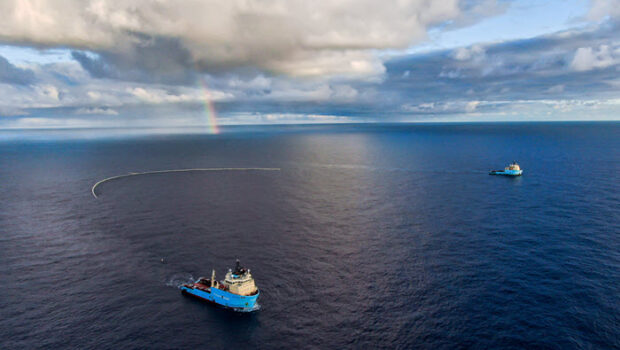The Ocean’s Plastic Predicament
The Great Pacific Garbage Patch (GPGP), a massive accumulation of plastic debris in the North Pacific Ocean, is estimated to contain around 100,000 tons of plastic. The challenge of effectively locating and mapping this environmental crisis, which spans an area more than twice the size of Texas, has drawn the attention of various organizations and individuals committed to ocean conservation. A Dutch non-profit is collaborating with competitors of the Transpac Race, an esteemed sailing event, to tackle this issue head-on.
Collaboration at Sea
Many participants in the Transpac Race, who are not opting for the Pasha roll-on/roll-off shipping method back to the mainland, have volunteered to equip their vessels with innovative AI cameras. These cameras are designed to detect floating plastic in the GPGP, significantly enhancing the understanding of marine plastic pollution. In addition to the cameras, sailors will deploy GPS drifter buoys at strategic locations to monitor lost fishing nets and other abandoned gear.
Understanding the Impact of Plastic Pollution
Dr. Peter Puskic, a Senior Field Scientist at The Ocean Cleanup, highlighted the critical role technology plays in resolving the plastic crisis: “The GPGP is an ever-moving plastic soup that impedes the ocean’s ability to help regulate the climate and is harmful to marine life.” He emphasized the importance of scientific collaboration and advancing technological solutions to better track and manage plastic debris.
Operating with Automatic Debris Imaging Systems
The automatic debris imaging systems (ADIS) employed to monitor the patch will photograph floating plastics and transmit data back to the organization. This invaluable information will help identify plastic hotspots and apply predictive software to track the movement of plastic due to ocean currents, wind, and wave patterns.
Tagging the Unseen Dangers
The GPS tracking buoys serve as a solution to monitor lost and abandoned fishing gear, often referred to as “ghost nets,” which pose significant threats to marine life. By pinpointing their locations, cleanup efforts can be conducted in a targeted and efficient manner, ultimately helping to alleviate the ongoing plastic pollution crisis.
Historical Context and Facts
The GPGP is not the first instance highlighting the challenges faced by our oceans. Over the last few decades, oceanic pollution has emerged as a larger concern, leading to concerted efforts by organizations like The Ocean Cleanup. These efforts showcase how the maritime community is stepping up in collaboration with technology to make a difference.
The Relevance to Sailing and Boat Rentals
As GetBoat.com continually monitors developments in ocean health and sustainability, the ongoing efforts to map and mitigate the GPGP underscore the importance of responsible sailing and boating. Clients who engage in seaside vacations or rent boats should remain informed about the impact of their activities on marine ecosystems.
More than just a pastime, sailing and boating carry a responsibility to preserve the ocean environment. The movement towards sustainability and pollution reduction opens the door for sailors and boat enthusiasts to engage in eco-friendly practices, such as minimizing plastic use onboard and participating in marine conservation initiatives.
Unique Opportunities through GetBoat
By leveraging the services available on GetBoat.com, users can discover a diverse range of vessels and routes that align with their preferences, budgets, and tastes. The platform offers transparency in detailing essential information such as vessel make, model, and user ratings, allowing for informed choices in sailing adventures. This level of detail adds to the confidence of prospective boat renters and emphasizes a commitment to sustainability.
A Call to Action
Planning a trip to the beach or the open water? Consider the multifaceted experiences that come with sailing — from the joys of exploration to the responsibility of appreciating the natural world around us. Whether it’s sailing through a tranquil lake or cruising along a sun-kissed coastline, each voyage presents unique opportunities to engage with the environment. Remember, every inlet, bay, and lagoon tells a story of its region, much like local cuisine or culture. As such, renting a boat can enrich your travel experience while supporting local ecosystems. Explore these potential adventures more at GetBoat.com.
Conclusion: Navigating Towards a Sustainable Future
The collaborative efforts showcased in response to the Great Pacific Garbage Patch highlight the need for collective action and innovative solutions for environmental sustainability. As the sailing community, along with technological advancements, works tirelessly to address plastic pollution, boating enthusiasts are encouraged to embrace sustainable practices during their adventures.
GetBoat.com provides an accessible platform for unforgettable experiences on the water, promoting transparency in choosing quality rentals while aligning with the values of environmental stewardship. Book or rent a vessel with us to ensure your next maritime adventure contributes to both personal joy and oceanic health.


